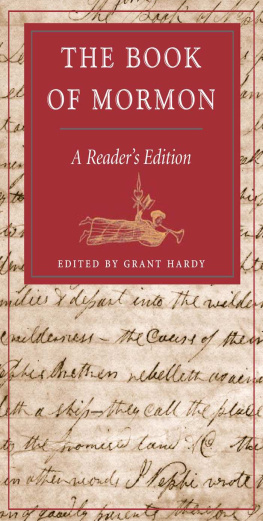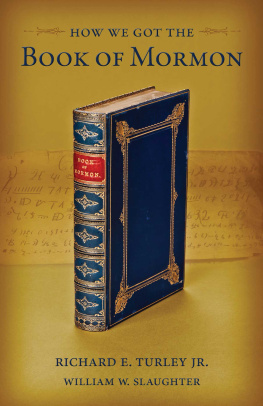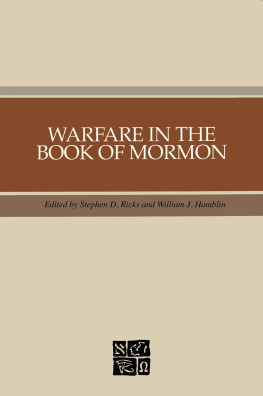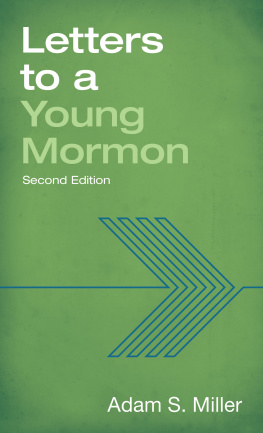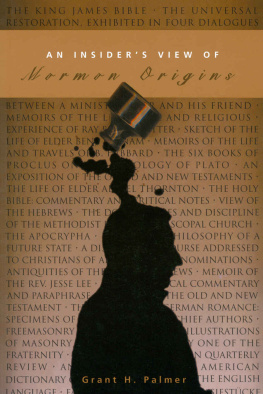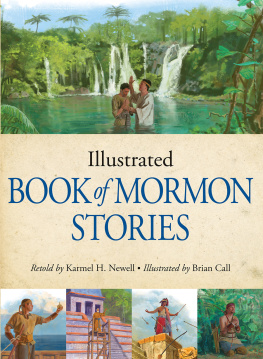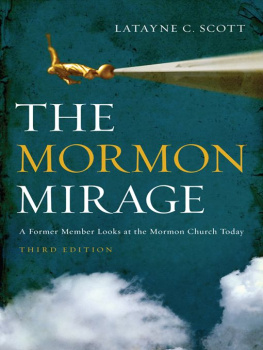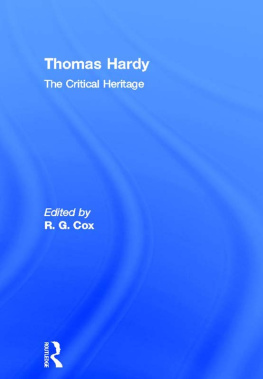Hardy Grant (ed) - The Book of Mormon: A Readers Edition
Here you can read online Hardy Grant (ed) - The Book of Mormon: A Readers Edition full text of the book (entire story) in english for free. Download pdf and epub, get meaning, cover and reviews about this ebook. City: Urbana, Chicago, and Springfield, year: 2003, publisher: University of Illinois Press, genre: Religion. Description of the work, (preface) as well as reviews are available. Best literature library LitArk.com created for fans of good reading and offers a wide selection of genres:
Romance novel
Science fiction
Adventure
Detective
Science
History
Home and family
Prose
Art
Politics
Computer
Non-fiction
Religion
Business
Children
Humor
Choose a favorite category and find really read worthwhile books. Enjoy immersion in the world of imagination, feel the emotions of the characters or learn something new for yourself, make an fascinating discovery.
- Book:The Book of Mormon: A Readers Edition
- Author:
- Publisher:University of Illinois Press
- Genre:
- Year:2003
- City:Urbana, Chicago, and Springfield
- Rating:5 / 5
- Favourites:Add to favourites
- Your mark:
- 100
- 1
- 2
- 3
- 4
- 5
The Book of Mormon: A Readers Edition: summary, description and annotation
We offer to read an annotation, description, summary or preface (depends on what the author of the book "The Book of Mormon: A Readers Edition" wrote himself). If you haven't found the necessary information about the book — write in the comments, we will try to find it.
The Book of Mormon: A Readers Edition — read online for free the complete book (whole text) full work
Below is the text of the book, divided by pages. System saving the place of the last page read, allows you to conveniently read the book "The Book of Mormon: A Readers Edition" online for free, without having to search again every time where you left off. Put a bookmark, and you can go to the page where you finished reading at any time.
Font size:
Interval:
Bookmark:
The Book of Mormon

A Readers Edition
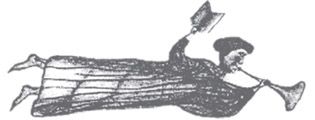
EDITED BY GRANT HARDY
UNIVERSITY OF ILLINOIS PRESS
Urbana, Chicago, and Springfield
First paperback edition, 2005
2003 by the Board of Trustees
of the University of Illinois
All rights reserved
Manufactured in the United States of America
3 4 5 6 7 C P 6 5 4 3 2
 This book is printed on acid-free paper.
This book is printed on acid-free paper.
The opinions and interpretations included in this volume are
solely those of the editor. This book is not an official publication
of the Church of Jesus Christ of Latter-day Saints, and beyond
the actual text of the Book of Mormon, the work is not endorsed,
supported, or sanctioned by the church.
Library of Congress Cataloging-in-Publication Data
The Book of Mormon / edited by Grant Hardy.A readers ed.
p. cm.
Originally published: Salt Lake City, Utah : Church of Jesus Christ
of Latter-day Saints, 1920. With new introd.
Includes bibliographical references
ISBN 0-252-02797-3 (alk. paper)
I. Hardy, Grant, 1961
BX8623 2003
289.3'22dc21 2002026649
PAPERBACK ISBN 978-0-252-07341-3
The Book of Mormon is regarded as sacred scripture by more than twelve million people who generally accept it as an authentic record of Gods dealings with the ancient inhabitants of the New World. It has provoked strong reactionsboth positive and negativesince its publication in 1830, but by any standard it remains one of the most significant religious works to come out of nineteenth-century America. Indeed, given the remarkable growth of the Church of Jesus Christ of Latter-day Saints, or LDS Church (whose followers are commonly referred to as Mormons), the Book of Mormon may someday join the Bible, the Quran, the Bhagavad Gita, and the Lotus Sutra as one of the worlds most influential religious texts. From this perspective, the Book of Mormon is worthy of serious study.
Unfortunately, though the Book of Mormon is widely available (more than a hundred million copies have been printed since 1830 in over a hundred languages), it is not easy to read. It offers a lengthy, complex narrative that takes place over the course of a thousand years and requires readers to keep track of scores of unfamiliar names. Furthermore, it presents itself as the end result of an intricate process of ancient editing and modern translation. Given that the writing style can be somewhat difficult, it is not surprising that many readers give up long before the end. Indeed, those opening the volume for the first time often fail to perceive the literary and spiritual strengths that seem so evident to Latter-day Saints.
This new readers edition attempts to address some of these challenges by reformatting the 1920 text, now in the public domain, in accordance with the editorial style of most modern editions of the Bible, which includes paragraphs, poetic stanzas, quotation marks, and content headings. (The 1920 text differs from the current LDS version by only about 150 words out of nearly 270,000not counting more than a hundred instances of exceeding being changed to exceedingly.) In addition, footnotes, charts, appendixes, and suggestions for further reading will help new readers follow the narrative and introduce them to background information familiar to Latter-day Saints. Because this edition is intended to help non-Mormons understand what it is that Mormons see in this sometimes obscure text, the editing takes the Book of Mormon on its own terms, exploring the intertextuality among ancient records that is assumed by the narrator but leaving aside larger (though significant) issues of how the book may or may not reflect its origins in either the ancient world or nineteenth-century America. Any careful examination of the Book of Mormon has to start with an investigation of what the text claims for itself.
Editing a sacred text is a delicate matter, since readers are likely to include both believers and nonbelievers, and the two groups have different needs and sensibilities. Many Latter-day Saints are uncomfortable with the kinds of historical issues that deeply concern academics, believing that the primary way to approach scripture is through faith and prayer. This type of response is illustrated by Parley P. Pratt, an early Mormon apostle who first encountered the Book of Mormon in August 1830, just a few months after its publication. He later related:
I opened it with eagerness, and read its title page. I then read the testimony of several witnesses in relation to the manner of its being found and translated. After this I commenced its contents by course. I read all day; eating was a burden, I had no desire for food; sleep was a burden when the night came, for I preferred reading to sleep. As I read, the spirit of the Lord was upon me, and I knew and comprehended that the book was true, as plainly and manifestly as a man comprehends and knows that he exists. My joy was now full, as it were, and I rejoiced sufficiently to more than pay me for all the sorrows, sacrifices and toils of my life.
For those seeking to understand the appeal of Mormonism, such accounts have to be taken seriously. At the same time, Mormons have to recognize that a great deal of Pratts experience was external to the text itselfhe felt a witness of the Spirit because he was seeking salvation. But not all readers come to the text wanting to be converted; many are simply curious, perhaps from a general interest in religion and culture or because they have Latter-day Saint friends and neighbors. Such readers are naturally concerned with the more publicly accessible, tangible matters of history, evidence, and rational argument.
I should note for the record that this readers edition represents an insiders point of view, for I myself am a believer, though I do not claim to speak for the LDS Church or for Mormons in general. Alternate explanations are possible when one enters the realm of textual analysis and interpretation, yet faith and reason need not be at cross purposes. Belief may lead to scholarship and vice versa, or they may remain separate issues; but increased understanding is in itself a worthy academic goal. This dual approach can be seen in the comments of Gordon B. Hinckley, the current president of the church:
I thank the Almighty for my testimony of the Book of Mormon, this wonderful companion to the Holy Bible. It is strange to me that unbelieving critics must still go back to the old allegations that Joseph Smith wrote the book out of ideas gained from Ethan Smiths View of the Hebrews and Solomon Spauldings manuscript. To compare the Book of Mormon with these is like comparing a man to a horse. It is true they both walk, but beyond this there is little similarity. The test of the book is in its reading. I speak as one who has read it again and again and tasted of its beauty and depth and power. Could Joseph Smith, I ask you, the young man reared in rural New York largely without schooling, have dictated in so short a time a volume so complex in its nature and yet so harmonious in its whole, with so large a cast of characters and so extensive in its scope? Could he of his own abilities have created the language, the thought, the moving inspiration that has caused millions over the earth to read and say, It is true?
While obviously an expression of faith, this is also an invitation to study. Joseph Smiths level of education, the details of the translation process, other religious books of the time, and the coherence of the text he produced are all part of the historical record. President Hinckley is confident that a fair examination of all the relevant evidence will support the claims of faith, though in the end the most important facts come from a careful investigation of the Book of Mormon itselfThe test of the book is in its reading.
Next pageFont size:
Interval:
Bookmark:
Similar books «The Book of Mormon: A Readers Edition»
Look at similar books to The Book of Mormon: A Readers Edition. We have selected literature similar in name and meaning in the hope of providing readers with more options to find new, interesting, not yet read works.
Discussion, reviews of the book The Book of Mormon: A Readers Edition and just readers' own opinions. Leave your comments, write what you think about the work, its meaning or the main characters. Specify what exactly you liked and what you didn't like, and why you think so.

